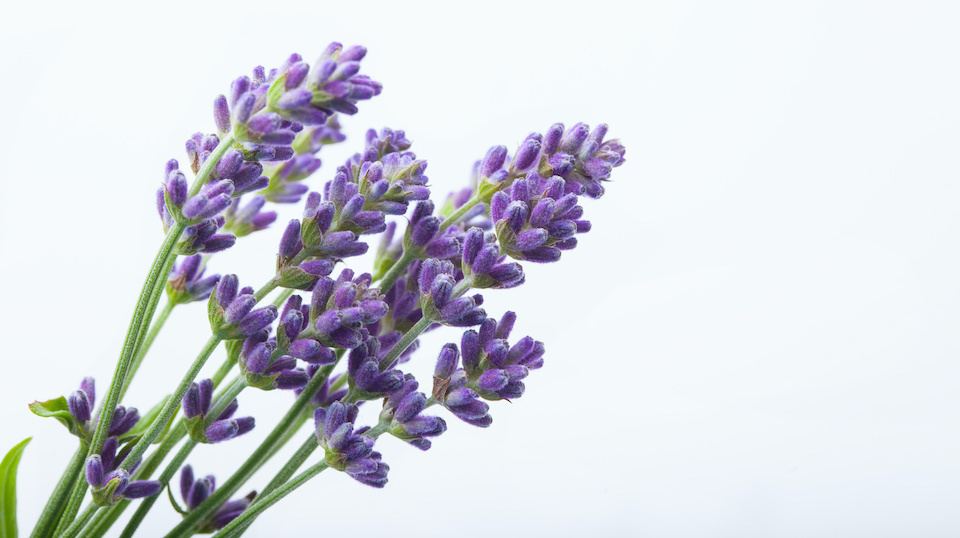What if I told you that you could grow your very own 100% natural sleep and anxiety aide in your garden? Lavender, a well respected culinary and landscaping herb, is also recognized as an insomnia remedy and a tension and stress buster. Its versatility makes it a must in any garden.
Common types of lavender fall into these four main groups – English, Spanish, French, and Lavandin. English lavender is a popular garden type and grows well in zones 5-8.
English lavenders are the best option for colder climates as they are hardy to zone 5. For gardens in the south, where it is hot and humid, Spanish and French types do best.
If you live in an area where your soil is heavy and you have harsh winters, consider growing lavender in containers, They will do great as long as they get at least eight hours of sunlight daily and are planted in a good potting mix with plenty of drainage holes. Bring plants indoors and place them in a sunny location for the winter.
Growing tips
Lavender is a perennial herb that will last for several years as long as it gets what it needs. It loves the scorching sun and dry soil, making it a perfect low maintenance plant.
Lavender does best when grown from small plants. Transplant into the garden after the last frost when the temperature stays above 40 degrees F. Space plants so that you have one plant per square foot.
Plant in well-draining soil. If necessary, mix a little gravel into the soil before you plant. Before planting, test your soil pH. If it is acidic, plants won’t do well. Amend your soil with lime, to get a more alkaline base if this causes an issue.
Use rock as mulch instead of the commonly used wood mulch. Doing this ensures that your lavender plant does not stay too moist.
Harvest the sprigs as needed throughout the growing season using shears to preserve fragile blooms and maximize flavor—harvest in the early morning when oils are most potent, and the flavor is intense.
If your lavender looks less than happy, it is probably getting too much shade, humidity, or water.
Cautions: Lavender can develop fungus if the climate is humid. Trim plants to provide air circulation. Prune back lavender each spring, leaving about ⅓ of old-growth.
Drying lavender
Many projects and recipes require the use of dried lavender. To dry the flowers and leaves, just spread them out on a clean dish towel and let them air dry for a few days. You can also tie lavender in small bundles and hang them up in a cool, dark, and dry place.
Using lavender in the garden
- Use lavender as an edging plant along walkways and paths where you can smell its sweet scent.
- Lavender is equally at home in a formal or informal herb garden. Its beautiful silvery-green foliage sets off other herbs and plants well.
- Use lavender for aromatic hedges.
- Lavender is a natural pest repellent so place it close to outdoor living areas such as patios and balconies.
- Lavender is the perfect pollinator attractor – place it around your veggie garden and throughout your landscape to draw butterflies, hummingbirds, and other pollinator pros.
- Plant lavender as part of a low-maintenance, drought-tolerant garden along with coneflowers, sedum, Shasta daisies, and black-eyed Susan.
Using lavender in the kitchen
- Chop buds and add to cake batter or pastry dough before baking.
- Add flower buds to fruit compote for a slightly spicy taste.
- Sprinkle fresh lavender on salads.
- Use fresh lavender in teas, cocktails, and other beverages.
- Flavor meat like lamb, chicken, or rabbit with fresh lavender buds and leaves.
- Make your own Herbes de Provence by combing dried lavender with thyme, savory, and rosemary.
Using lavender for stress-busting and better sleep
The beauty of lavender is that it can be used in aromatic sleep balms, elixirs, and even as an essential oil in your bedroom diffuser. Here are some of my favorite ways to use this sweet garden plant for relaxation and better sleep.
Pineapple Lavender Juice
This juice is the perfect answer to a stressful day or an after workout drink.
What you need:
- 1 pineapple, peeled and chopped
- 1 Tbsp dried lavender
- Sprigs of lavender for garnish
How to make it:
- Process pineapple and lavender through your juicer.
- Serve over ice topped with a sprig of lavender.
Banana Lavender Smoothie
This smoothie contains potassium, protein, fat, and the right amount of carbs along with tasty lavender leaves.
What you need:
- 3 frozen bananas
- 1/2 cup coconut milk
- 1 tsp vanilla extract
- 1 Tbsp dried lavender leaves
How to make it:
- Place all ingredients in a blender. Mix until smooth.
Mint Lavender Tea
Enjoy this delicious tea before bed and drift off into a sweet sleep.
What you need:
- 1/4 cup fresh lavender petals
- 1 cup fresh mint leaves
- 4 cups of water
How to make it:
- Place lavender petals and mint leaves in a saucepan.
- Pour the water over the herbs. Bring to a boil.
- Turn on low and simmer for 20 minutes.
- Remove from heat, strain out mint and lavender and serve.
Lavender Dryer Sachets
The relaxing aroma of these dryer sachets keeps you stress-free all day long.
What you need:
- Dried lavender buds
- Muslin drawstring bags
How to make it:
- Gather muslin bags and lavender buds.
- Fill bags ¾ full with the lavender buds and pull drawstrings very tight.
- Just toss the bag into your dryer for a light lavender scent. If you want a stronger scent, add another lavender-filled bag.
- Once the bags lose their scent, just replace the lavender, and they are ready to use again!
Happy Growing!
-Susan Patterson, Master Gardener, and Author




